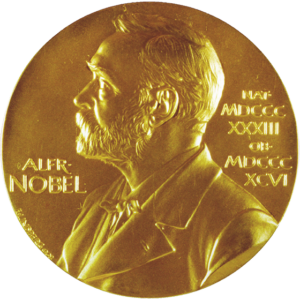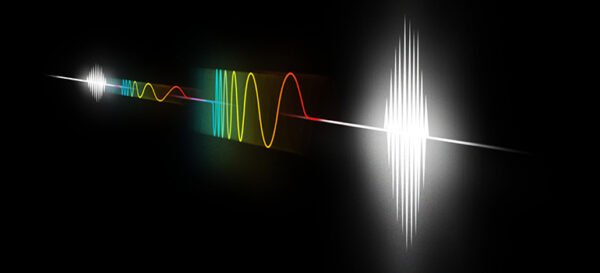The Royal Swedish Academy of Sciences has decided to award the Nobel Prize in Physics 2018 with one half to Arthur Ashkin, Bell Laboratories, Holmdel, USA and the other half jointly to Gérard Mourou, École Polytechnique, Palaiseau, France and University of Michigan, Ann Arbor, USA and Donna Strickland, University of Waterloo, Canada.
The Royal Swedish Academy of Sciences has decided to award the Nobel Prize in Physics 2018
“for groundbreaking inventions in the field of laser physics”
with one half to Arthur Ashkin, Bell Laboratories, Holmdel, USA
“for the optical tweezers and their application to biological systems”
and the other half jointly to Gérard Mourou, École Polytechnique, Palaiseau, France and University of Michigan, Ann Arbor, USA and Donna Strickland, University of Waterloo, Canada
“for their method of generating high-intensity, ultra-short optical pulses”.
Tools made of light
 The inventions being honoured this year have revolutionised laser physics. Extremely small objects and incredibly rapid processes are now being seen in a new light. Advanced precision instruments are opening up unexplored areas of research and a multitude of industrial and medical applications.
The inventions being honoured this year have revolutionised laser physics. Extremely small objects and incredibly rapid processes are now being seen in a new light. Advanced precision instruments are opening up unexplored areas of research and a multitude of industrial and medical applications.
Arthur Ashkin invented optical tweezers that grab particles, atoms, viruses and other living cells with their laser beam fingers. This new tool allowed Ashkin to realise an old dream of science fiction – using the radiation pressure of light to move physical objects. He succeeded in getting laser light to push small particles towards the centre of the beam and to hold them there. Optical tweezers had been invented.
A major breakthrough came in 1987, when Ashkin used the tweezers to capture living bacteria without harming them. He immediately began studying biological systems and optical tweezers are now widely used to investigate the machinery of life.
Gérard Mourou and Donna Strickland paved the way towards the shortest and most intense laser pulses ever created by mankind. Their revolutionary article was published in 1985 and was the foundation of Strickland’s doctoral thesis.
Using an ingenious approach, they succeeded in creating ultrashort high-intensity laser pulses without destroying the amplifying material. First they stretched the laser pulses in time to reduce their peak power, then amplified them, and finally compressed them. If a pulse is compressed in time and becomes shorter, then more light is packed together in the same tiny space – the intensity of the pulse increases dramatically.
Strickland and Mourou’s newly invented technique, called chirped pulse amplification, CPA, soon became standard for subsequent high-intensity lasers. Its uses include the millions of corrective eye surgeries that are conducted every year using the sharpest of laser beams.
The innumerable areas of application have not yet been completely explored. However, even now these celebrated inventions allow us to rummage around in the microworld in the best spirit of Alfred Nobel – for the greatest benefit to humankind.

Arthur Ashkin, born 1922 in New York, USA. Ph.D. 1952 from Cornell University, Ithaca, USA.
Gérard Mourou, born 1944 in Albertville, France. Ph.D. 1973.
Donna Strickland, born 1959 in Guelph, Canada. Ph.D. 1989 from University of Rochester, USA.
Prize amount: 9 million Swedish krona, with one half to Arthur Ashkin and the other half to be shared between Gérard Mourou and Donna Strickland.
The Royal Swedish Academy of Sciences, founded in 1739, is an independent organisation whose overall objective is to promote the sciences and strengthen their influence in society. The Academy takes special responsibility for the natural sciences and mathematics, but endeavours to promote the exchange of ideas between various disciplines.
Nobel Prize® and the Nobel Prize® medal design mark are registered trademarks of the Nobel Foundation.
Documents
The illustrations are free to use for non-commercial purposes. Attribute ”©Johan Jarnestad/The Royal Swedish Academy of Sciences”.
Illustration: Optical tweezers
Illustration: A motor molecule walks inside tha light trap
Illustration: CPA – Chirped Pulse Amplification
Illustration: Nanosecond laser vs Femtosecond laser
Illustration: Timescale, attosecond
Illustration: Towards ever higher intensities
Contact
Experts
Anders Irbäck, member of the Nobel Committee for Physics, The Royal Swedish Academy of Sciences
+46 46 222 34 93, anders@thep.lu.se
Mats Larsson, member of the Nobel Committee for Physics, The Royal Swedish Academy of Sciences
+46 8 553 786 47, ml@fysik.su.se
Press contact
Kajsa Waaghals, Press Secretary, The Royal Swedish Academy of Sciences
+46 70 878 67 63, kajsa.waaghals@kva.se
More information
The Laureates
Arthur Ashkin, American Institute of Physics
Gérard Mourou, École Polytechnique
Donna Strickland, University of Waterloo
Articles
Ashkin, A. (1997) Optical trapping and manipulation of neutral particles using lasers, Proc. Natl. Acad. Sci. USA, Vol. 94, pp. 4853–4860
Strickland, D. and Mourou, G. (1985) Compression of Amplified Chirped Optical Pulses, Optics Communications, Vol. 56, Nr 3
Video
Ashkin, A. and Gordon, J. P. (2014) Symposium 2014, Optical Society, San Jose, California
Ashkin, A. (2004) Harvey Prize 2004, Technion, Israel